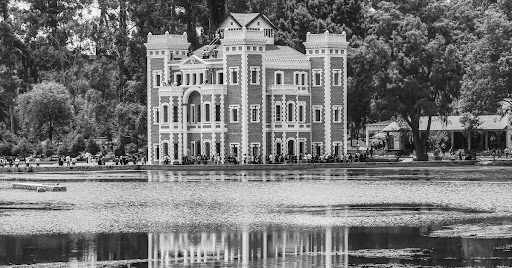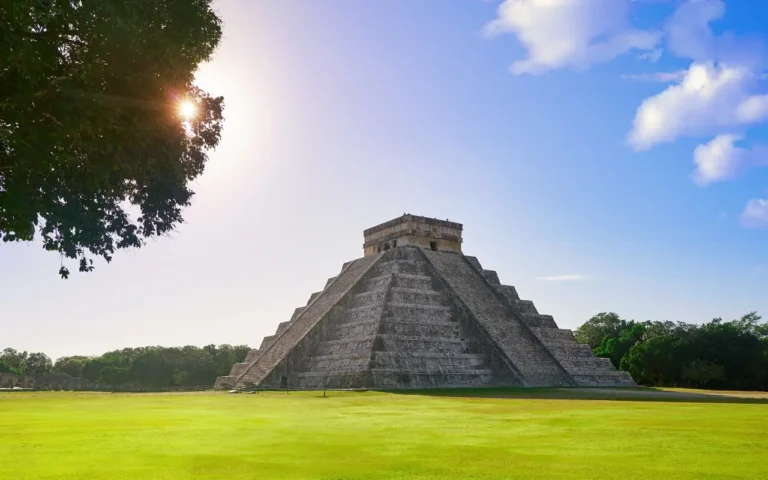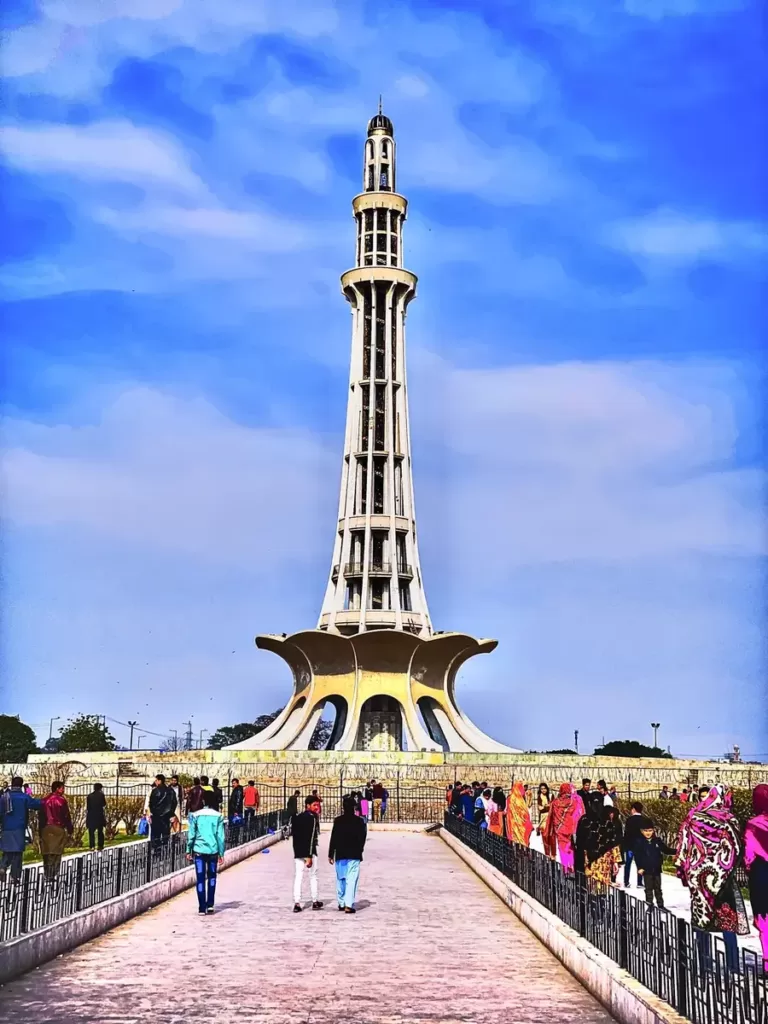8 Masterpieces of Traditional Islamic Architecture – Stunning Art & designs

Islamic architecture is a fascinating and complex art form. It has been developed over centuries, blending different cultural influences into unique buildings. This style of architecture is famous for its ornate decorations, geometric patterns, and intricate designs. Traditional islamic architecture has also played a significant role in shaping the history and culture of the Islamic world. The eight masterpieces of architecture in Islam, we will explore in this article.
It will represent the pinnacle of Islamic architecture and showcase the beauty and complexity of this art form. Each of these buildings is significant in its own right, serving as a testament to the skill and creativity of Islamic architects. These masterpieces have also played an essential role in shaping the cultural and religious identities of the people who built them and those who continue to admire them today.
Whether you are a student of architecture, a history buff, or simply someone who appreciates the beauty of art and design, these masterpieces of Islamic architecture will surely inspire and captivate you. Let’s dive into the details of each masterpiece and discover what makes them unique and essential in Islamic architecture. If you’re passionate about historical places, you won’t want to miss ‘The Fascinating History of Medieval Castles‘.
The Great Mosque of Mecca, Saudi Arabia

The Great Mosque of Mecca, also known as the Masjid al-Haram, is one of the most sacred sites in Islam. It is located in Mecca, Saudi Arabia, and serves as the holiest mosque in the world. Millions of Muslims worldwide come to Mecca annually to perform the Hajj pilgrimage.
The history of the Great Mosque dates back to the time of Prophet Muhammad, who ordered the construction of the first mosque in the 7th century.
Over the centuries, the mosque has been expanded and renovated numerous times, with each ruler leaving their mark on the building. Today, the mosque covers an area of approximately 88 acres and can accommodate up to 2 million worshippers at once.
One of the key architectural features of the Great Mosque is the Kaaba. It is a cube-shaped structure located at the centre of the mosque. It is believed to have been built by Prophet Ibrahim and his son Prophet Ismail as a symbol of monotheism. Muslims around the world face towards the Kaaba during their daily prayers.
The mosque also features several minarets, which are tall, slender towers that are used to call Muslims to prayer. The most famous of these minarets is the Bab-al-Umrah. It is located south of the Kaaba and is known for its intricate designs and beautiful calligraphy.
The Great Mosque has undergone several major renovations and expansions in recent years. The most notable of these was the expansion project completed in 2019. It increased the mosque’s capacity to 2 million worshippers and included the construction of a new wing, a new plaza, and several pedestrian bridges.
The Alhambra, Spain

The Alhambra Palace in Granada, Spain, is a stunning masterpiece of architecture in Islam. It is steeped in history and cultural significance, Built in the 14th century during the Nasrid dynasty. It is a true gem of the Mudéjar style of Islamic architecture, which blends Islamic and Christian artistic traditions.
The palace complex is known for its intricate stucco work, carved wood panels, and beautiful gardens. These are a testament to the skill and creativity of the Islamic architects who designed them. The key architectural features of the palace include the following:
- Famous Court of Lions
- A stunning courtyard with a central fountain and intricate marble columns
- Nasrid Palace, adorned with beautiful mosaics and calligraphy
The history of Alhambra dates back to the 9th century when it was initially built as a fortress. Yet, in the 14th century, it was transformed into a palace by the Nasrid dynasty. The palace served as a symbol of the power and wealth of the Nasrid rulers. It was also a centre of learning and culture.
The Alhambra had a profound influence on both Spanish and Moorish architecture. It continues to inspire architects and artists around the world. The palace’s intricate designs and ornate decorations are a testament to the creative spirit of Islamic architecture. Its blend of different artistic traditions is a testament to the power of cultural exchange.
Today, the Alhambra remains one of Spain’s most popular tourist attractions, attracting millions of yearly visitors. It is a living testament to the enduring legacy of Islamic architecture.
The Hagia Sophia, Turkey

The Hagia Sophia in Istanbul, Turkey, is one of Islam’s most iconic and fascinating examples of architecture. Originally built as a Christian church in the 6th century, it later served as a mosque before being converted into a museum in the 20th century.
The history of the Hagia Sophia dates back to the reign of Emperor Justinian in the 6th century. He ordered the church’s construction as a testament to the glory of the Byzantine Empire. The church was designed to be one of the world’s most impressive and awe-inspiring buildings, with a massive dome towering over the city.
In the 15th century, the Ottoman Empire conquered Constantinople. He then converted the Hagia Sophia into a mosque, adding minarets and removing some Christian artwork. The building continued to serve as a mosque for over 400 years until it became a museum in the 20th century.
The key architectural features of the Hagia Sophia are its massive dome and stunning mosaics. The dome is an engineering marvel, with a diameter of over 100 feet and a height of nearly 200 feet. It is supported by a series of arches and piers, which create a sense of space and lightness that is truly breathtaking. The mosaics, which date back to the Christian era, depict scenes from the life of Jesus and the saints and are a testament to the creativity and skill of the Byzantine artists who created them.
The Sheikh Lotfollah Mosque, Iran

Nestled in the heart of Isfahan, Iran, the Sheikh Lotfollah Mosque is a stunning example of Islamic architecture that will take your breath away. It was Built in the 17th century during the Safavid dynasty. It is renowned for its intricate tile work, stunning calligraphy, and breathtaking dome.
The mosque was initially built as a private prayer hall for the royal family. It was not until much later that it was opened to the public. The key architectural feature of the mosque is its dome, an engineering marvel. It showcases the mastery of Persian architects. The dome is adorned with intricate tile work, which creates a stunning play of light and shadow that is truly mesmerizing.
The Sheikh Lotfollah Mosque also boasts some of the most beautiful calligraphy in the world, with intricate designs on walls and ceilings. The calligraphy is a testament to the creativity and skill of Islamic artists, who used their art to express their faith and love of beauty.
The mosque is deeply significant to Persian culture and history. It continues to be a source of inspiration for architects and artists around the world. Its beauty and elegance are a testament to the enduring legacy of Islamic architecture. Its blend of different artistic traditions is a testament to the power of cultural exchange.
Today, the Sheikh Lotfollah Mosque remains one of Iran’s most popular tourist attractions. It is a living testament to the creativity and ingenuity of Islamic architects.
The Qutub Minar, India

The Qutub Minar, located in Delhi, India, is a towering monument steeped in history and significance. Built in the 13th century, it is one of India’s most iconic examples of Islamic architecture.
The history of the Qutub Minar dates back to the reign of the Delhi Sultanate in the 13th century. It was built as a victory tower to commemorate the defeat of the Hindu king. It quickly became a symbol of the power and prestige of the Islamic rulers. The tower is named after Qutb-ud-din Aibak, the first Muslim ruler of Delhi.
The key architectural feature of the Qutub Minar is its towering minaret, which stands over 240 feet tall. The minaret is adorned with intricate carvings and calligraphy, which reflect the skill and creativity of the Islamic artists who built it. Another notable feature of the Qutub Minar is the nearby iron pillar, which is over 1,600 years old and has never rusted.
The Qutub Minar has influenced Islamic architecture, inspiring generations of artists to create their masterpieces. Its unique beauty reflects the diversity and richness of Indian culture. Its blend of Islamic and Indian styles is a testament to the power of cultural exchange. To explore another iconic monument with historical significance, you can also discover the significance of Minar-e-Pakistan, which holds a special place in the hearts of the Pakistani people.
Today, the Qutub Minar remains one of India’s most popular tourist attractions, attracting visitors from all over the world. It is a living testament to the enduring legacy of Islamic architecture in India and a symbol of the cultural and artistic richness of the country.
The Blue Mosque, Turkey

The Blue Mosque, also known as the Sultan Ahmed Mosque, is one of the most iconic landmarks of Istanbul, Turkey. Built in the early 17th century, it is renowned for its stunning beauty and unique architectural features.
The history of the Blue Mosque is intimately tied to the history of the Ottoman Empire. It was commissioned by Sultan Ahmed I, who wanted to build a mosque that would rival the grandeur of the nearby Hagia Sophia. The mosque was designed by the architect Sedefkar Mehmed Aga. He drew inspiration from Islamic and Byzantine architectural traditions.
The key architectural feature of the Blue Mosque is its cascading domes and six soaring minarets. They give it a sense of majesty and grandeur that is genuinely awe-inspiring. The mosque is also unique in its use of blue tiles and decorations, which give it its distinctive name. The blue tiles, in intricate patterns and designs, create a stunning play of light and shadow that is breathtakingly to behold.
Beyond its architectural features, the Blue Mosque is also a testament to Islamic civilisation’s artistic. Its intricate decorations and calligraphy reflect Islamic culture’s profound spiritual and aesthetic values. Its unique blend of different artistic traditions is a testament to the power of cultural exchange.
Today, the Blue Mosque remains one of the most popular tourist attractions in Istanbul, attracting visitors from all over the world.
The Great Mosque of Djenné, Mali

The Great Mosque of Djenné, located in Djenné in Mali, is one of Africa’s most iconic and recognizable examples of Islamic architecture. It was Built in the 13th century. It is a true masterpiece of adobe construction and an enduring symbol of the cultural and architectural richness of West Africa.
The history and significance of the Great Mosque of Djenné are intimately tied to the history of the city of Djenné itself. The mosque was built as a symbol of the growing power and prestige of the Islamic rulers of the region. It quickly became a centre of religious and cultural life in the city. Today, it remains a symbol of the enduring legacy of African Islamic civilization.
The key architectural feature of the Great Mosque of Djenné is its use of adobe walls and wooden beams, which give it a unique and striking appearance. The walls are made from mud and straw, mixed and then applied in layers to create a smooth, rounded shape. The wooden beams are used to support the roof and create the distinctive patterns and designs that adorn the mosque’s walls.
The Great Mosque of Djenné is a living testament to the creativity and ingenuity of African builders and artisans. Its unique blend of Islamic and West African architectural styles is a testament to the resilience of Islamic civilization in the face of adversity.
References:






